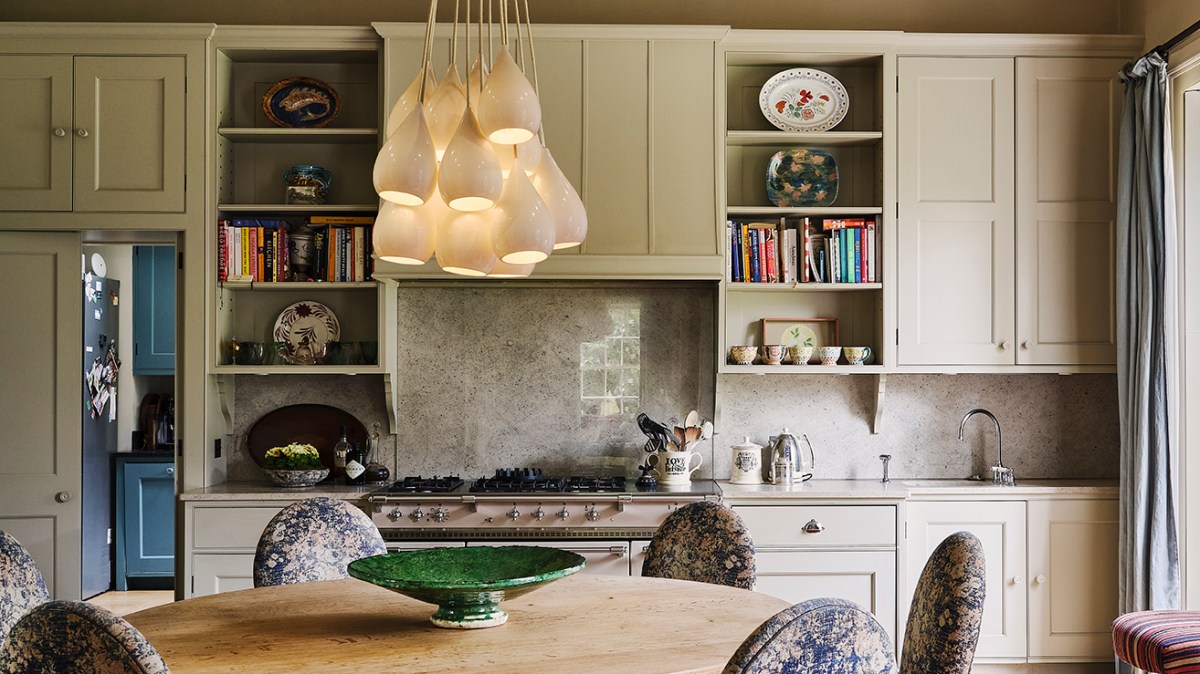Lifestyle
New Kitchen Trend Emerges as Homeowners Embrace ‘Dirty’ Areas

The latest trend in home design is taking a surprising turn as homeowners increasingly embrace the concept of a “dirty kitchen.” This hidden space, typically located adjacent to the main kitchen, allows for food preparation while keeping the primary living area clean and presentable.
As urban living spaces continue to shrink, the demand for utility in kitchen design has never been more critical. The idea behind a dirty kitchen is to create a functional area where cooking messes can be contained, maintaining the aesthetic appeal of the main kitchen. This trend has gained traction throughout 2023, particularly in urban areas where space is at a premium.
Interior designers have reported a growing interest in this concept, emphasizing its practicality. “A dirty kitchen serves as a secondary workspace where homeowners can prepare meals without the stress of cleaning up immediately,” explained Sarah Thompson, a leading designer based in London. This approach not only enhances functionality but also addresses the desire for a tidy living environment, crucial in today’s fast-paced lifestyles.
The dirty kitchen typically features durable materials and appliances designed for heavy use. Homeowners can install high-efficiency stoves, ample counter space, and easy-to-clean surfaces, enabling them to tackle culinary tasks without worrying about the mess. This space often includes additional storage for utensils and ingredients, making meal preparation more efficient.
In terms of layout, the dirty kitchen is often strategically positioned to minimize disruption to the main living area. This thoughtful design allows homeowners to entertain guests without the distraction of cooking clutter. As a result, many are opting for open-plan designs that seamlessly integrate the dirty kitchen with the rest of the home.
The trend is particularly popular among families who value both practicality and aesthetics. According to a recent survey conducted by the National Kitchen and Bath Association, nearly 65% of homeowners expressed interest in incorporating a secondary kitchen space into their homes. The survey also highlighted that 42% of respondents considered this feature essential for modern living.
As the concept evolves, it is also influencing the way kitchens are marketed. Real estate agents are beginning to highlight the presence of dirty kitchens as a selling point for prospective buyers. “Having a dirty kitchen can add significant value to a home, especially in urban markets where buyers prioritize both function and style,” remarked James Carter, a real estate expert in New York City.
The rising popularity of dirty kitchens reflects broader lifestyle changes, particularly among younger homeowners. Many are looking for ways to balance their busy lives while maintaining a sense of order in their homes. The dirty kitchen trend addresses this need by providing a dedicated space for culinary activities without compromising on the overall appearance of the home.
As this design trend continues to gain momentum, it is clear that the dirty kitchen is more than just a passing fad. It represents a shift in how homeowners view functionality and aesthetics in modern kitchen design. With its practical benefits and appeal to a variety of lifestyles, the dirty kitchen is poised to become a mainstay in homes around the world.
-

 Politics3 weeks ago
Politics3 weeks agoPlane Crash at Southend Airport Claims Four Lives After Takeoff
-

 Top Stories3 weeks ago
Top Stories3 weeks agoAustralian Man Arrested for Alleged Damage to Stone of Destiny
-

 Business3 weeks ago
Business3 weeks agoTrump’s “One Big Beautiful Bill” Faces Economic Scrutiny
-

 Business3 weeks ago
Business3 weeks agoNew Study Links Economic Inequality to Lower Well-Being Globally
-

 Entertainment5 days ago
Entertainment5 days agoEmmerdale Characters Face Danger as Stabbing Shakes Village
-

 Sports3 weeks ago
Sports3 weeks agoSheffield United’s Young Talent Embraces Championship Opportunity
-

 Lifestyle3 weeks ago
Lifestyle3 weeks agoBrits Identify Adulting Challenges: Cleaning, Cooking, and Time Woes
-

 Health3 weeks ago
Health3 weeks agoAI Tool EAGLE Streamlines Lung Cancer Mutation Detection
-

 Lifestyle5 days ago
Lifestyle5 days agoTesco Slashes Prices on Viral Dresses in Summer Clearance Sale
-

 Sports3 weeks ago
Sports3 weeks agoEverton Pursues Johan Bakayoko as Transfer Deadline Approaches
-

 Science3 weeks ago
Science3 weeks agoStudy Reveals Widespread Flooding in North Carolina Exceeds Expectations
-

 Politics3 weeks ago
Politics3 weeks agoUncertain Future for The Royal Albert Pub as Landlord Departs




















